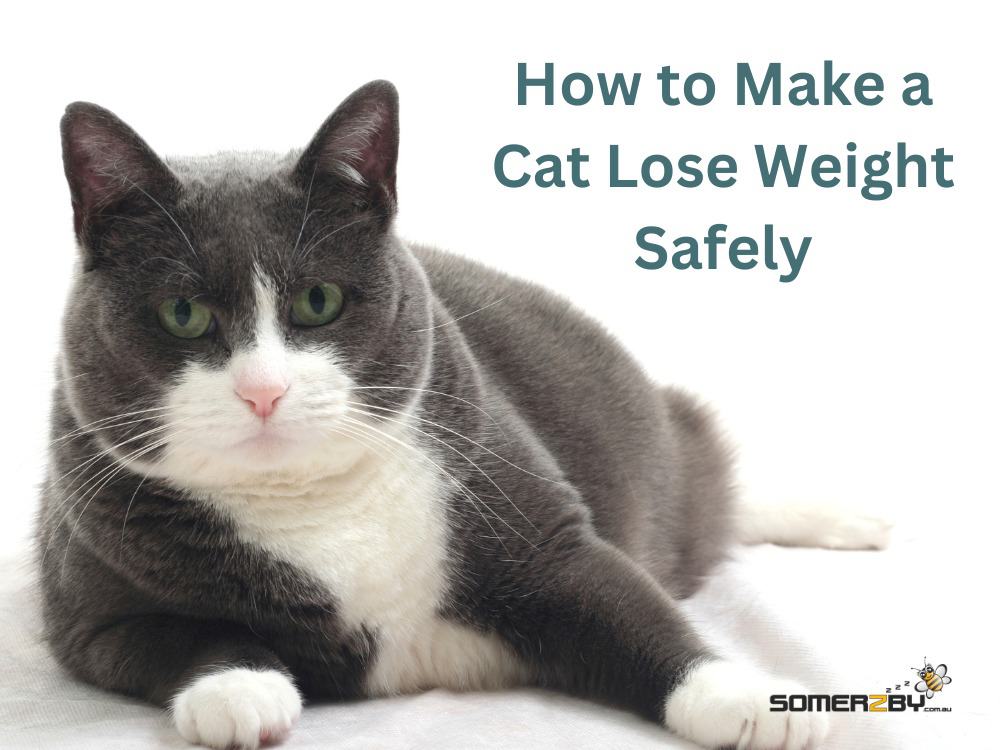Cats
Practical Tips – How to Make a Cat Lose Weight Safely
Sadly, chubby cats have become an internet sensation and the health risks of feline obesity often go ignored.
There isn’t a lot of advice out there for concerned cat owners who want to understand how to make a cat lose weight safely.
Good news, Somerzby are here to help! In this blog, we will uncover how to make a cat lose weight safely through diet and exercise. We’ll explore common challenges, the importance of monitoring progress and why you need to visit your vet first.
Pet obesity prevention is the responsibility of every cat owner. So keep reading and we’ll have your cat feeling better in no time./p>
Understanding the Need for Weight Loss in Cats
Just like humans, cats are prone to putting on a few extra kilos. An important aspect of cat ownership is helping your feline friend maintain a healthy weight.
The Health Risks of Feline Obesity
Feline obesity doesn’t just affect how our kitties look – it can lead to serious health problems too. Excess weight can lead to an increased risk of diabetes, fatty liver disease and osteoarthritis.
They may also suffer from reduced mobility and decreased quality of life because carrying around that extra weight is hard work.
Is My Cat Overweight?
Figuring out if your cat needs to lose weight isn’t always straightforward. Not all fluffy furballs are overweight – some breeds naturally have more heft than others.
Determining if your cat is overweight can be done by observing their physical characteristics closely. Watch out for signs such as the loss of their waistline when looking down from above and sagging flesh around the abdomen.
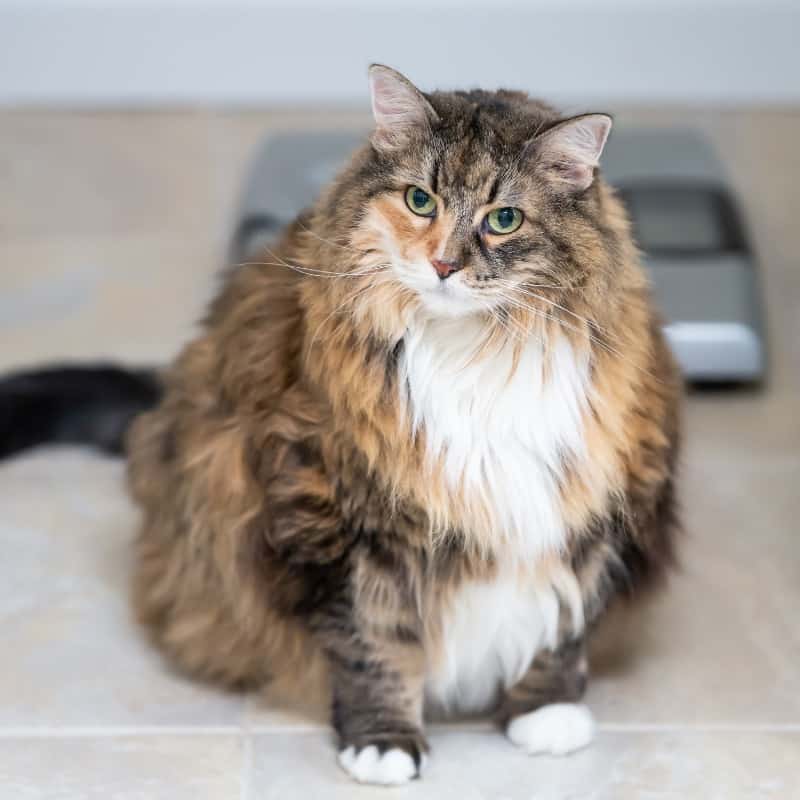
Consulting with a Veterinarian
Before pet owners try to help their cat reach its ideal weight, it’s vital to have a chat with your vet. Not only will they give expert advice tailored specifically for your feline friend, but they’ll also check if there are underlying health issues contributing to the weight gain.
Vets have vast knowledge and experience when it comes to pet nutrition and health. They can provide useful tips about feeding practices, exercise routines, and even specific diet foods that might help in shedding those extra kilos.
What to Expect During the Visit
The visit usually starts off with weighing the cat to establish its current state. Your vet may use something called Body Condition Score (BCS) – a scale from 1-9 used by vets worldwide – as an indicator of obesity levels. Cats scoring above 5 generally need some dietary intervention.
Your vet will ask questions about feeding habits; how often does your kitty get fed? What types of food is she given? Do treats make up a large part of her diet?
A comprehensive physical examination follows next. This isn’t just focused on Kitty’s waistline but includes checks for arthritis or other illnesses that could be affecting mobility or metabolism rate.
Crafting a Tailored Plan
Your vet will then determine your cat’s ideal body weight and create an individualised weight loss plan that takes into account your cat’s breed, size, activity levels and access to the outdoors.
This customised approach ensures more success because each cat has unique needs and preferences.
Every bit helps when it comes to increasing activity levels in overweight cats – start slow then gradually increase intensity over time. Consult with your vet before starting any new exercise routine for your cat.
Dietary Changes for Cat Weight Loss
Changing your cat’s diet can be a powerful tool to help them safely lose extra weight. It’s not just about reducing the amount they eat, but also considering what you’re feeding them.
Type of Food
Cats are obligate carnivores, which means their bodies need certain nutrients that only come from meat. Commercial cat foods sometimes fill up on carbs, which aren’t ideal for cats and can lead to weight gain.
As part of a weight loss diet, ensure your cat eats dry food that is high in protein and low in fats.
Portion Control
Overfeeding is a common cause of obesity in cats. To avoid this problem start by measuring out your cat’s food using a measuring cup rather than just filling up the food bowl until it looks ‘about right’.
Feeding Schedules
Frequent small meals throughout the day mimic natural hunting behaviour more closely than one big meal at night does – so consider splitting their daily intake into multiple smaller feeds if possible.
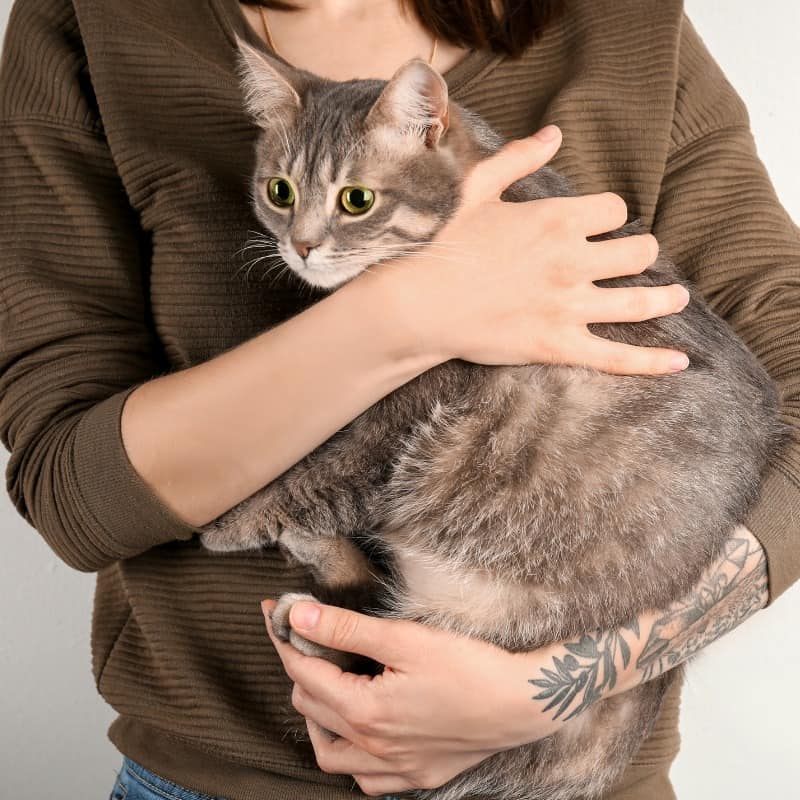
Increasing Physical Activity
Getting your cat to move more can play a big part in helping them lose weight.
Playtime
Kitties are born predators, and they can’t resist a good hunt. Toys that mimic prey, like feather wands or laser pointers, can get your feline friend up and moving. But remember, always supervise play with these toys to make sure your pet stays safe.
You could also try interactive games that require both mental and physical stimulation from the cat. Hide-and-seek using their favourite healthy treats or puzzle feeders which demand effort for rewards could be beneficial too.
Spending Time Outdoors
Consider creating an outdoor enclosure where your house cat can safely explore nature while getting some exercise at the same time. Somerzby offers a range of cat enclosures that might fit the bill perfectly. They’re designed with safety in mind but don’t skimp on space for movement either.
Scratching Posts
Cat scratching posts, climbing shelves or even just regular stairs at home can help increase a cat’s activity levels and burn calories. Cats love to climb – it not only provides them with physical exercise but also satisfies their natural instinct to explore from high vantage points.
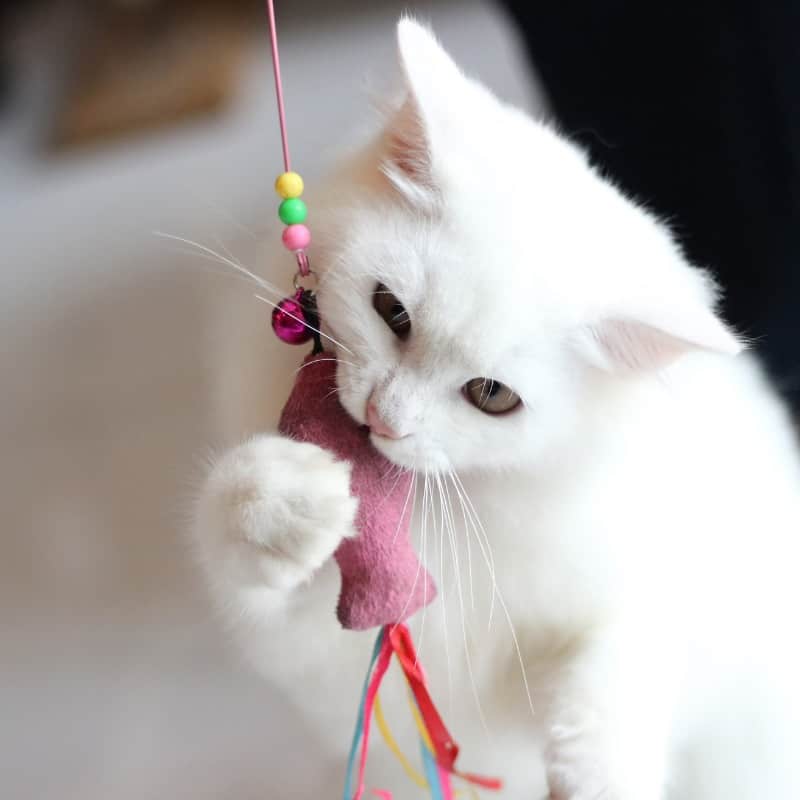
Monitoring Progress and Adjusting the Plan
Keeping tabs on your feline’s weight reduction journey is vital for its success. Just like we track our own health, it’s important to monitor your cat’s progress too.
Weight Tracking
To keep tabs on your cat’s weight reduction, regular weigh-ins are essential. But don’t rely solely on these numbers. Observing their behaviour can also give you clues about how they’re doing.
A change in behaviour could mean that something needs adjusting in their plan. For example, if they seem more lethargic than usual or not as interested in playtime, this might suggest they’re not getting enough food energy for their increased activity levels.
Making Necessary Changes
If you’ve been consistent with portion control and daily activities but still aren’t seeing any improvement, visit your vet for advice. You may need to alter your cat’s food intake or exercise regiment.
Remember that patience is key in this journey. Weight loss in cats should be a slow process – a sudden drop could indicate health problems or lead to liver failure. So always take it easy and give your furry friend the time they need to shed those extra kilos safely.
Guide your cat to a healthier weight with patience and consistency. Weight loss takes time! Maintain consistent feeding plans, use measured portions and celebrate milestones with non-food rewards like playtime.
Potential Challenges and Solutions
When it comes to your cat’s weight loss journey, you might encounter a few roadblocks. But don’t worry. We’ve got some practical solutions to help navigate these challenges.
Fussy Eaters
If your feline friend turns up its nose at diet food, try introducing new meals gradually. Mix the old food with the new one in increasing proportions until they get used to it. Make sure you give lots of praise and attention when they eat their healthier option.
Lack of Exercise Motivation
Some obese cats may be reluctant to move around more. Interactive toys like feather wands or laser pointers can stimulate them into action because chasing things is natural for them.
Different Cats, Different Diets
In multi-cat households, feeding each cat separately might be necessary if diets differ among them due to different dietary needs or stages of life. You may need to feed your cats in separate rooms and supervise to make sure they don’t eat each others food.
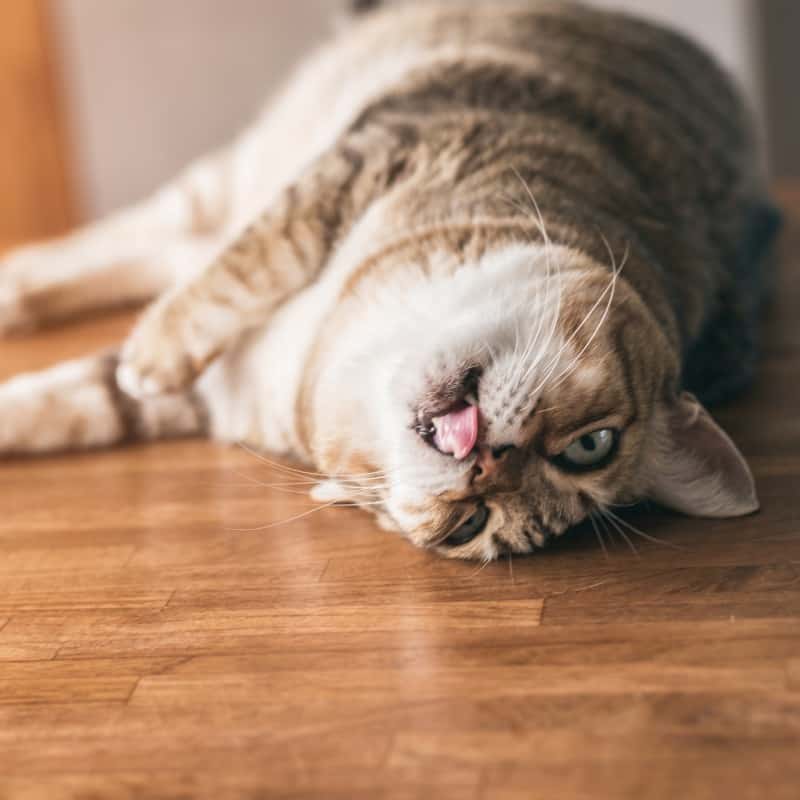
Toni’s Wrap
Understanding how to make a cat lose weight safely is crucial for their health and well-being. Feline obesity poses serious health risks and consulting with a veterinarian is the first step in crafting a tailored weight loss plan.
Dietary changes and increasing physical activity are equally important. Monitoring progress and addressing challenges with patience and consistency ensures a safe and successful weight loss journey for your furry friend.
At Somerzby, we not only offer a range of cat products but we also bring a wealth of experience in cat care.
We are committed to supporting pet owners on their journey to provide the best care and environment for their feline companions.




